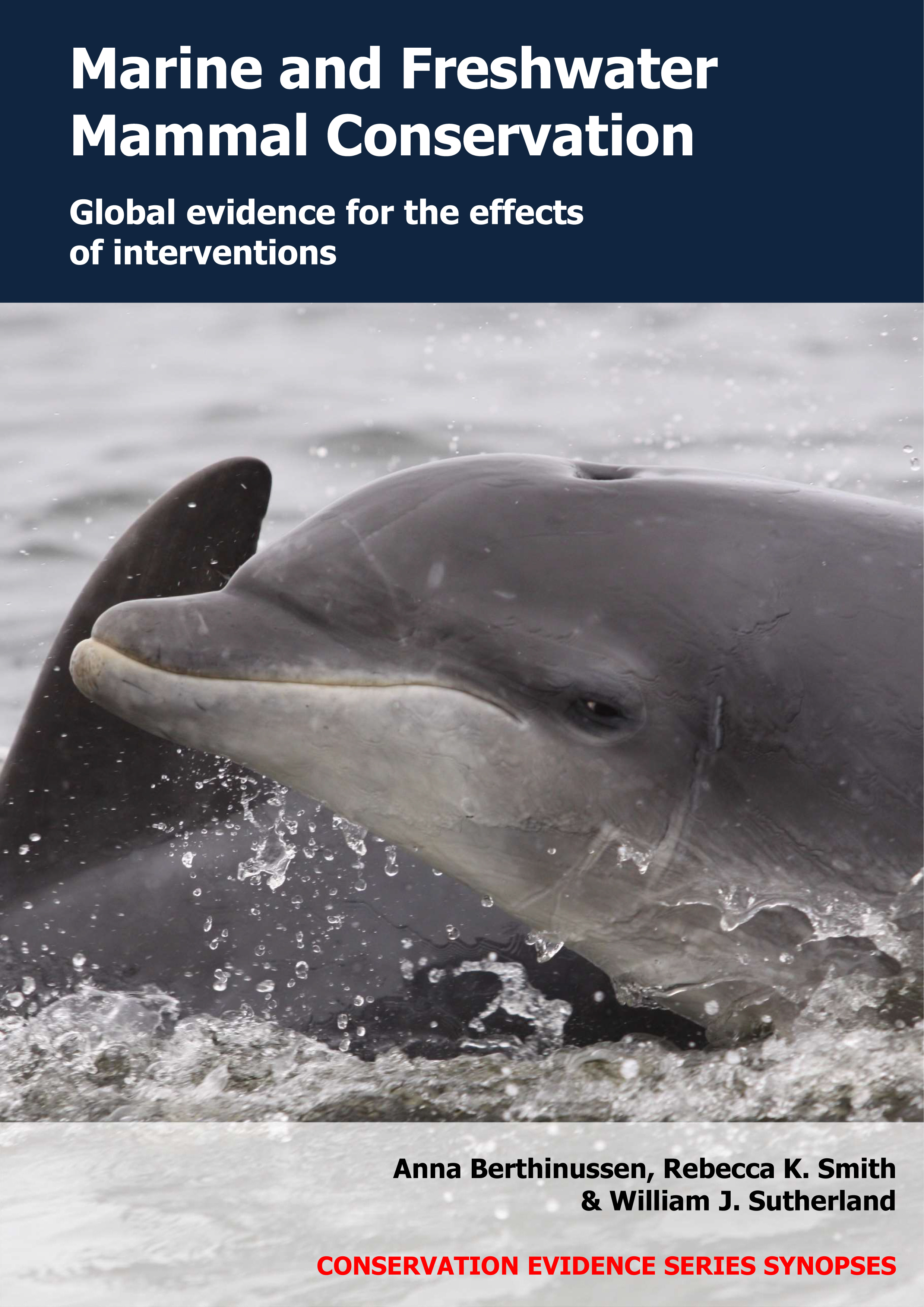Attach acoustically reflective objects to fishing gear
-
Overall effectiveness category Unlikely to be beneficial
-
Number of studies: 2
View assessment score
Hide assessment score
How is the evidence assessed?
-
Effectiveness
10% -
Certainty
41% -
Harms
15%
Study locations
Supporting evidence from individual studies
A replicated, controlled study in 1984–1985 of two pelagic areas in the Timor Sea and Arafura Sea, Australia (Hembree & Harwood 1987) found that attaching metallic bead chains to fishing nets did not reduce dolphin entanglements. In both years of the study, dolphin entanglement rates did not differ significantly between nets with bead chains (rates not reported; total entanglements: 1984 = 3 dolphins, 1985 = 29 dolphins) and conventional nets (total entanglements: 1984 = 21 dolphins, 1985 = 17 dolphins). Three dolphin species were entangled: common bottlenose Tursiops truncatus, spinner Stenella longirostris and pantropical spotted dolphins Stenella attenuata (see original paper for data). In 1984, a commercial vessel fished two types of gill net: one with 4-mm bead chains (8 or 16-m vertical chains attached at 8 m intervals; fished for 450 h); and one conventional net (fished for 354 h). Both net types (approximately 5 km long x 16 m deep, mesh size 150 mm) were deployed 3 m below the water surface. In 1985, a commercial vessel fished gill nets (10.5 km long; 39 deployments in total) with alternating 1-km sections with and without 4-mm bead chains (woven into the net in diagonal rows). Nets (15 m deep, mesh size 140–150 mm) were deployed at the water surface. Fishers recorded dolphins entangled in the nets in September–October 1984 and September–November 1985.
Study and other actions testedA controlled study in 2012 in a pelagic area in the Gulf of Alaska, USA (O'Connell et al. 2015) found that attaching acrylic beads next to fishing hooks did not reduce sperm whale Physeter macrocephalus predation on catches of target sablefish Anoplopoma fimbria. Catch rates of sablefish when sperm whales were present did not differ significantly between fishing gear with and without beads attached next to hooks (data not reported). The number of whale vocalizations associated with predation events (rapid clicks followed by a pause) also did not differ significantly between fishing gear with and without beads (data not reported). In March–August 2012, four commercial fishing vessels deployed 24 ‘long line’ fishing lines each divided into five experimental units. Each unit (comprising 4 x 183 m sections of gear with 168 hooks on each) was randomly assigned as a treatment (25 mm acrylic sphere ‘beads’ attached next to hooks) or control (no beads). An observer on board the fishing vessels recorded sablefish catches during hauls of 32 units of fishing gear in which whales were present. Acoustic recorders attached to each of the 24 fishing lines recorded sperm whale vocalizations.
Study and other actions tested
Where has this evidence come from?
List of journals searched by synopsis
All the journals searched for all synopses
This Action forms part of the Action Synopsis:
Marine and Freshwater Mammal Conservation
Marine and Freshwater Mammal Conservation - Published 2021
Marine and Freshwater Mammal Synopsis





)_2023.JPG)














